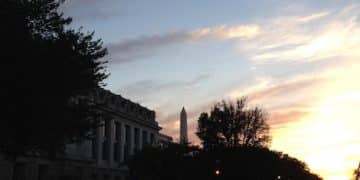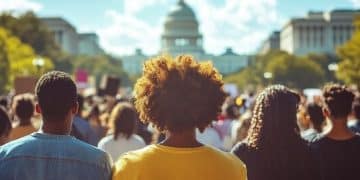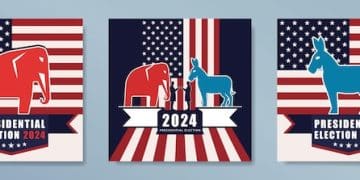How 2025 Supreme Court Rulings Could Reshape Affirmative Action Debates
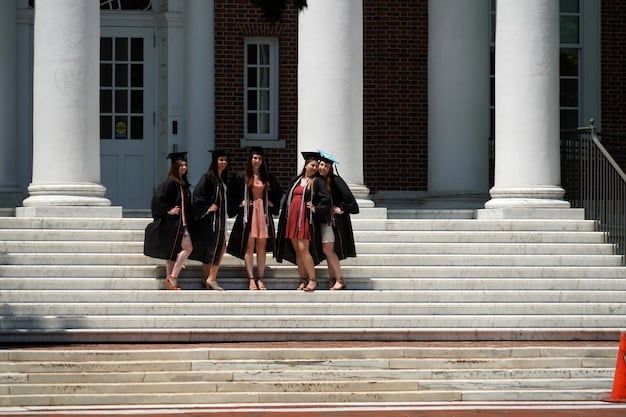
How Will the 2025 Supreme Court Rulings Impact Affirmative Action Debates? These rulings could significantly alter the legal landscape, influencing college admissions, employment practices, and government programs, potentially leading to a reevaluation of affirmative action policies across the United States.
The Supreme Court’s decisions continue to shape American society, and upcoming rulings in 2025 could dramatically reshape the landscape of affirmative action debates. Understanding how will the 2025 Supreme Court rulings impact affirmative action debates is crucial for anyone interested in social justice, education, and equal opportunity.
This article dives deep into the potential consequences, exploring the legal, social, and economic dimensions of these landmark decisions. What impacts might we expect?
Understanding Affirmative Action and the Supreme Court
Affirmative action refers to policies and practices designed to address past and present discrimination against marginalized groups, particularly in education and employment. The Supreme Court’s role in interpreting the Constitution and federal laws has made it a key battleground for legal challenges to these policies. Understanding the context is vital to assess how will the 2025 Supreme Court rulings impact affirmative action debates.
Historical Context of Affirmative Action
Affirmative action policies have evolved significantly since their inception in the 1960s. Initially aimed at ensuring equal opportunity, these policies have faced numerous legal challenges, leading to a complex web of court decisions.
Key Supreme Court Cases on Affirmative Action
Several landmark cases have shaped the legal framework of affirmative action. These include Regents of the University of California v. Bakke (1978), Grutter v. Bollinger (2003), and most recently, Students for Fair Admissions v. Harvard (2023) which significantly curtailed the use of race in college admissions.
- Regents of the University of California v. Bakke (1978): Ruled against strict racial quotas but allowed race to be considered as one factor in admissions.
- Grutter v. Bollinger (2003): Upheld the University of Michigan Law School’s admissions policy, citing the educational benefits of diversity.
- Students for Fair Admissions v. Harvard (2023): Struck down Harvard’s and UNC’s affirmative action policies, arguing they violated the Equal Protection Clause.
These cases provide critical insights into the Court’s evolving perspective on affirmative action and set the stage for future legal battles. The recent SFFA v. Harvard decision established a precedent that may influence how will the 2025 Supreme Court rulings impact affirmative action debates.
In conclusion, the Supreme Court’s involvement in affirmative action has been pivotal in shaping its understanding and implementation. The upcoming rulings in 2025 will likely continue this trend, potentially leading to substantial shifts in how affirmative action policies are perceived and practiced.
Potential Areas of Supreme Court Review in 2025
Looking ahead to 2025, several key areas related to affirmative action may come under Supreme Court review. These areas could significantly influence how will the 2025 Supreme Court rulings impact affirmative action debates.
Employment Practices
The Supreme Court may address the legality of affirmative action in employment, particularly regarding hiring and promotion policies. Challenges to diversity, equity, and inclusion (DEI) programs could gain traction.
Government Programs
Federal and state programs designed to assist disadvantaged groups could also face legal challenges. The Court may examine whether these programs violate the Equal Protection Clause of the Fourteenth Amendment.
Educational Initiatives
While the Supreme Court has already addressed college admissions, there may be further challenges related to scholarships, grants, and other educational initiatives aimed at promoting diversity.
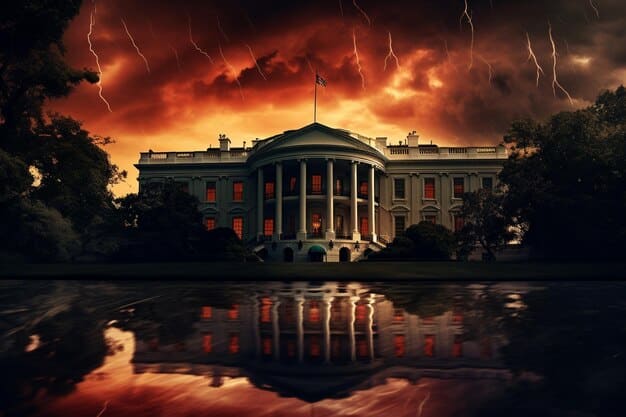
Each of these areas presents unique legal and social considerations that could shape the Court’s decisions. The legal arguments presented and the justices’ interpretations of the Constitution will play a crucial role in determining how will the 2025 Supreme Court rulings impact affirmative action debates.
To summarize, the potential areas of review include employment practices, government programs, and educational initiatives. The outcomes of these reviews could redefine the scope and legality of affirmative action policies in the United States.
Legal Arguments and Possible Outcomes
The legal arguments presented in cases related to affirmative action often revolve around the interpretation of the Equal Protection Clause of the Fourteenth Amendment. Understanding these arguments is essential to predict how will the 2025 Supreme Court rulings impact affirmative action debates.
Equal Protection Clause
The Equal Protection Clause prohibits states from denying any person within their jurisdiction the equal protection of the laws. Opponents of affirmative action argue that these policies violate this clause by treating individuals differently based on race or ethnicity.
Strict Scrutiny
The Supreme Court applies strict scrutiny to laws and policies that involve racial classifications. This means that the government must demonstrate that the policy serves a compelling government interest and is narrowly tailored to achieve that interest.
Potential Outcomes
Depending on the legal arguments and the justices’ interpretations, the Supreme Court could uphold, strike down, or modify existing affirmative action policies. A conservative-leaning Court might be more inclined to limit or eliminate race-conscious policies.
- Upholding Policies: The Court could affirm the importance of diversity and allow race to be considered as one factor among many in admissions and employment.
- Striking Down Policies: The Court could rule that affirmative action policies are unconstitutional, leading to their elimination.
- Modifying Policies: The Court could impose stricter standards for affirmative action policies, requiring greater justification for their use.
The legal arguments presented and the potential outcomes will have far-reaching implications for how will the 2025 Supreme Court rulings impact affirmative action debates and the future of equal opportunity in the United States.
In conclusion, the legal arguments surrounding the Equal Protection Clause and the application of strict scrutiny will significantly influence the Supreme Court’s decisions. Understanding these factors is crucial for anticipating the potential outcomes and their impact on affirmative action policies.

Social and Economic Implications
The Supreme Court’s rulings on affirmative action have significant social and economic implications. Decisions regarding race-conscious policies can affect diversity in education and employment, influencing broader societal outcomes.
Impact on Diversity
Affirmative action policies have been credited with increasing diversity in colleges and workplaces. Eliminating or restricting these policies could lead to a decline in representation for underrepresented groups.
Economic Effects
Studies have shown that diversity can have positive economic effects, fostering innovation and productivity. Changes in affirmative action policies could impact these dynamics, affecting economic growth and opportunity.
Social Equity
Affirmative action is often viewed as a tool for promoting social equity and addressing historical injustices. Supreme Court decisions in this area can significantly impact the pursuit of a more equitable society.
These implications extend beyond individual opportunities, affecting broader societal outcomes and the fabric of American communities. The long-term consequences of how will the 2025 Supreme Court rulings impact affirmative action debates are likely to be profound.
In summary, the social and economic implications of the Supreme Court’s rulings on affirmative action are far-reaching. These decisions can affect diversity, economic growth, and social equity, shaping the future of American society.
The Role of Public Opinion and Political Discourse
Public opinion and political discourse play a significant role in shaping the context in which the Supreme Court makes its decisions. The ongoing debates and discussions surrounding affirmative action can influence the justices’ perspectives and the legal arguments presented. The understanding of how will the 2025 Supreme Court rulings impact affirmative action debates is affected by these discussions.
Public Opinion Trends
Public opinion on affirmative action is divided, with varying levels of support and opposition across different demographic groups. These trends can influence the political climate and the pressure on policymakers.
Political Polarization
Affirmative action has become a highly polarized issue, with strong views on both sides of the political spectrum. This polarization can complicate the legal and social debates surrounding these policies.
Media Influence
The media plays a crucial role in framing the debate on affirmative action, influencing public perception and political discourse. How the media portrays these issues can shape public opinion and the broader conversation.
Understanding the influence of public opinion and political discourse is essential for analyzing the context in which the Supreme Court operates. These factors can shape the legal arguments presented and the potential outcomes of the Court’s decisions, affecting how will the 2025 Supreme Court rulings impact affirmative action debates.
In conclusion, public opinion and political discourse play a vital role in shaping the debate on affirmative action. These factors can influence the Supreme Court’s decisions and the broader societal impact of these policies.
Navigating the Future of Affirmative Action
As the Supreme Court’s rulings continue to shape the landscape of affirmative action, it is important to consider strategies for navigating the future of equal opportunity. Understanding how will the 2025 Supreme Court rulings impact affirmative action debates is crucial for developing effective approaches.
Alternative Strategies
In light of potential restrictions on race-conscious policies, alternative strategies for promoting diversity and inclusion may become more important. These could include targeted outreach programs, holistic review processes, and efforts to address socioeconomic disparities.
Legal Challenges and Advocacy
Legal challenges to affirmative action policies are likely to continue, and advocacy efforts will be essential for protecting and promoting equal opportunity. Engaging in informed and respectful dialogue is crucial for advancing these goals.
Promoting Diversity and Inclusion
Regardless of the legal landscape, efforts to promote diversity and inclusion remain essential for creating a fair and equitable society. This includes fostering inclusive workplaces, supporting diverse educational opportunities, and addressing systemic inequalities.
By exploring alternative strategies, engaging in legal challenges and advocacy, and remaining committed to promoting diversity and inclusion, we can work towards a future where equal opportunity is a reality for all. Effectively addressing the question of how will the 2025 Supreme Court rulings impact affirmative action debates requires a multi-faceted and forward-thinking approach.
In summary, navigating the future of affirmative action requires a combination of alternative strategies, legal advocacy, and a continued commitment to promoting diversity and inclusion. These efforts are essential for creating a more equitable society.
| Key Point | Brief Description |
|---|---|
| ⚖️ Supreme Court’s Role | Interprets laws affecting affirmative action. |
| 💼 Employment Practices | DEI programs face potential legal challenges. |
| 📈 Economic Effects | Diversity impacts innovation and productivity. |
| 🏛️ Equal Protection | Affirmative action debates revolve around this clause. |
Frequently Asked Questions
Affirmative action includes policies designed to address past and present discrimination against marginalized groups, ensuring equal opportunities in education and employment.
The Equal Protection Clause, part of the Fourteenth Amendment, prohibits states from denying anyone equal protection under the law, influencing affirmative action legality.
The rulings could reshape policies in education, employment, and government programs. This may lead to significant changes in diversity and equity efforts across the US.
Alternative strategies include broad outreach programs, holistic review processes, and targeted support for socioeconomically disadvantaged individuals.
Diversity fosters innovation, creativity, and broader perspectives, which can lead to better problem-solving and economic growth. Restrictions may challenge these gains substantially.
Conclusion
The upcoming Supreme Court rulings in 2025 present a pivotal moment for affirmative action. Understanding how will the 2025 Supreme Court rulings impact affirmative action debates requires considering the legal landscape, potential outcomes, and broader social and economic implications.
Navigating this complex issue demands a commitment to promoting equal opportunity through alternative strategies, legal advocacy, and ongoing efforts to foster diversity and inclusion. By staying informed and engaged, we can work towards a more equitable and just society.
